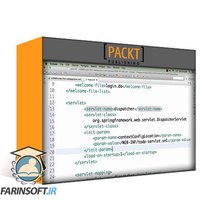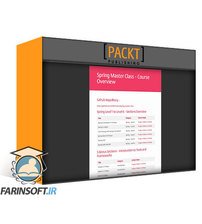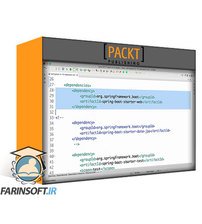جمع جزء: 3,213,000 تومان
- × 1 عدد: آموزش کامل Illustrator 2020 - 189,000 تومان
- × 1 عدد: دوره یادگیری ایجاد درآمدهای جانبی ویزه طراحان - 189,000 تومان
- × 1 عدد: VoIP and Web Calls: Tips for Better Remote Communications - 189,000 تومان
- × 1 عدد: آموزش تست Integration در برنامه های ASP.NET Core - 189,000 تومان
- × 1 عدد: آموزش کامل و کاربردی Dependency Injection در برنامه های ASP.NET Core - 189,000 تومان
- × 1 عدد: دوره یادگیری کامل CCNA Cyber Ops : SECFND 210-250 - 189,000 تومان
- × 1 عدد: آموزش اتومات سازی در دیتاسنترهای Cisco - 189,000 تومان
- × 1 عدد: مبانی شبکه Cisco : آدرس دهی IP - 189,000 تومان
- × 1 عدد: آموزش مبانی راه اندازی ویدیو کنفرانس با تجهیزات سیسکو - 189,000 تومان
- × 1 عدد: Leading Your Team Through Change - 189,000 تومان
- × 1 عدد: آموزش ساخت API های وب بوسیله ASP.NET Web API - 189,000 تومان
- × 1 عدد: Certificate Course in Pharmaceutical Data Integrity - 189,000 تومان
- × 1 عدد: 15X EQ BOOST: Your Emotional Intelligence in 15 Days - 189,000 تومان
- × 1 عدد: آموزش هوش مصنوعی ویژه مدیران پروژه - 189,000 تومان
- × 1 عدد: فیلم یادگیری کامل Building ASP.NET Core Hosted Services and .NET Core Worker Services - 189,000 تومان
- × 1 عدد: آموزش مهاجرت از ویندوز 10 به Mac - 189,000 تومان
- × 1 عدد: Multiple Phase Mass Balance - 189,000 تومان




![[NEW] Python Bootcamp: Master Python Programming in 2024](https://farinmedia.ir/farinmedia-img/https://farinmedia.ir/farinmedia-img/images-123/27719.jpgmain-resized.jpg)







